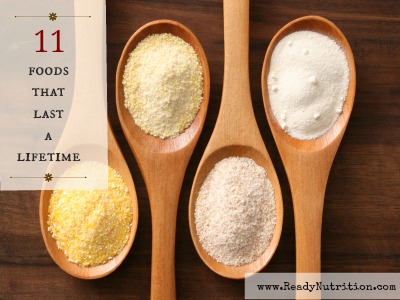Home » Posts tagged 'ready nutrition' (Page 9)
Tag Archives: ready nutrition
Will the Extinction of Bees Really Mean the End of Humanity?
Will the Extinction of Bees Really Mean the End of Humanity?

That’s a shame because our very existence relies on the tiny buzzing creatures.
We’ve known for years that bee populations all across North America and Europe are collapsing at an alarming rate.
This is a huge threat to our food supply. One-third of all the food we eat comes from plants that are pollinated by insects, and 80% of those crops are pollinated by bees. It also has big implications for our meat supply as well: plants (like alfalfa) that feed animals are pollinated by bees.
The largest international survey of insect pollinators found that just 2 percent of wild bee species now account for 80 percent of global crop pollination.
Put bluntly, if all the bees die, humanity will follow.
Worldwide, there are nearly 20,000 known species of bees in seven recognized biological families. Of those, 4,000 calls the United States home. Bees exist on every continent except Antarctica. Wherever you find insect-pollinated, flowering plants you will find bees.
Native bees come in all different shapes, sizes, and colors, but one thing they all have in common is their important role as pollinators.
Here are just some of the fruits and veggies bumble bees help pollinate: Squash, pumpkin, zucchini, alfalfa, cranberries, apples, green beans, scarlet beans, runner beans, cucumber, strawberries, tomatoes, sweet peppers, onions, potatoes, blueberries, cherries, kiwifruit, raspberries, blackberries, plums, and melons.
According to a Cornell University study published in 2012, crops pollinated by honeybees and other insects contributed $29 billion to United States farm income in 2010.
As you can see, bees are a crucial part of our ecosystem. Our food supplies – and essentially, our lives – rely on them.
…click on the above link to read the rest of the article…
7 Ways To Stay Alive in a Post-Collapse Society
7 Ways To Stay Alive in a Post-Collapse Society
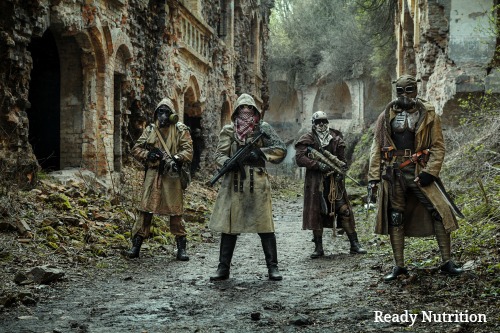
In a SHTF world, it’s a different story.
The sad thing with laws and rules is that they only help protect the citizen from the law-abiding citizen: the system focuses on self-discipline and restraint.
7 Ways To Stay Alive in a Post-Collapse Society
As is extensively detailed in The Prepper’s Blueprint: How To Survive Any Disaster, life will definitely be different when the SHTF. You will not be able to rely on the law to protect you; however, you will also not be prosecuted under the law for some superficial or superfluous reason: your life and your family’s lives take precedence. That being said, what do you do? How do you handle these attackers…people that are intent on taking you down and taking what you have? Let’s outline some basics that you can use post-SHTF.
- Never travel anywhere alone: always go in pairs with one to guard and watch over the other one.
…click on the above link to read the rest of the article…
Why Every Prepper Needs Non-GMO Seeds in Their Long-Term Supplies
Why Every Prepper Needs Non-GMO Seeds in Their Long-Term Supplies
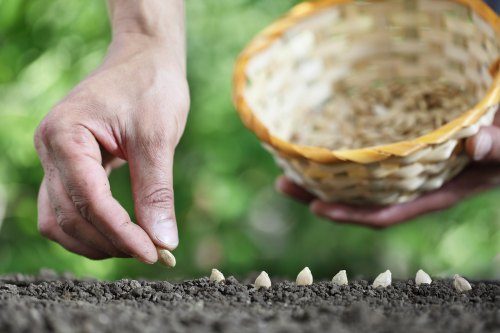
 This is difficult to avoid, as it is almost impossible to prevent bees and/or wind from spreading pollen from GMO crops to non-GMO farms. There is a definitive work that you can read to find out the dangers from a health perspective and from a corporate perspective (regarding “Frankenstein GMO’s and factory farming). It is entitled Seeds of Deception: Exposing Industry and Government Lies About the Safety of the Genetically Engineered Foods, by Jeffrey M. Smith.
This is difficult to avoid, as it is almost impossible to prevent bees and/or wind from spreading pollen from GMO crops to non-GMO farms. There is a definitive work that you can read to find out the dangers from a health perspective and from a corporate perspective (regarding “Frankenstein GMO’s and factory farming). It is entitled Seeds of Deception: Exposing Industry and Government Lies About the Safety of the Genetically Engineered Foods, by Jeffrey M. Smith.
The book was written in 2003 and contains a wealth of knowledge about GMO (Genetically Modified Organisms) crops and farming…giving the history behind the corporate movement and explaining how cross-pollinating occurs (as outlined above), giving the corporations “leverage” with which to take down small family farms.
Fortunately, there are champions to rely upon that will give us a “rallying flag” to regroup and wage this battle, uphill though it may seem. My good friend, Miss Tess Pennington, is one of those champions: a family woman of faith, honesty, and solid American values based on hard work and true pioneer spirit. She has shown us the way: there are numerous articles available at Ready Nutrition for your perusal on seed-saving and seed preservation that will be your “compass rose” to keep the harmful GMO crops from crossing your table.
…click on the above link to read the rest of the article…
Hurricane Expert Warns: “Prepare for the Worst-Case Scenario”… U.S. Could See Up to 5 Major Hurricanes in 2018
Hurricane Expert Warns: “Prepare for the Worst-Case Scenario”… U.S. Could See Up to 5 Major Hurricanes in 2018

Two primary factors are critical for determining how active the upcoming Atlantic hurricane season will be. One is whether El Niño develops and the other is the configuration of North Atlantic sea surface temperatures. When El Niño conditions are present and ocean temperatures in the tropical Pacific are warm, the Atlantic hurricane season tends to be less active.
Increased sea levels could also be indicative of more severe storm damage. “Higher sea levels mean that deadly and destructive storm surges push farther inland than they once did, which also means more frequent nuisance flooding. Disruptive and expensive, nuisance flooding is estimated to be from 300 percent to 900 percent more frequent within U.S. coastal communities than it was just 50 years ago.”
The U.S. Could See as Many as 5 Major Hurricanes in 2018
When combined together, these indications could create a conditions perfect for hurricane formations. AccuWeather Atlantic Hurricane Expert Dan Kottlowski is predicting the United States will see 12-15 tropical storms, 6 to 8 are forecasted to become hurricanes and 3 to 5 are forecast to become major hurricanes.

“According to Kottlowski, conditions are ripe for early season development in the Gulf of Mexico due the warm water already in place in that part of the Atlantic basin.
Lessons from the Roman Army for Post-SHTF Combat Operations
Lessons from the Roman Army for Post-SHTF Combat Operations

We’ve discussed “Fabian Tactics” in previous articles. These were based on the exploits of Quintus Fabius Maximus in the First Punic War between Carthage and Rome. “Hit and Run” tactics exemplify their description: strike a numerically superior larger force at a time and place of your choosing, and then break contact. Fade back into the forest, hide, and avoid further combat until the next engagement of your choice.
Lessons from the Roman Army for Post-SHTF Combat Operations
Let’s “fix” ‘em: set the enemy up and zap ‘em! Let’s do a few things that the Romans were famous for…using these techniques here and now.
- Choose the Ground: Yes, you choose the place you will engage them. Along with this, you pick the time of day, the formation of the attack, the objective, and the criteria for withdrawal. You choose it. As an individual, you would be sniping. As a group (depending on your numbers and composition), you can engage in operations limited by your size. Choosing the ground means also to actively recon the enemy and not allow him to choose it and catch you unawares
…click on the above link to read the rest of the article…
Survival Uses for Pine Tree Resin You Haven’t Thought Of
Survival Uses for Pine Tree Resin You Haven’t Thought Of
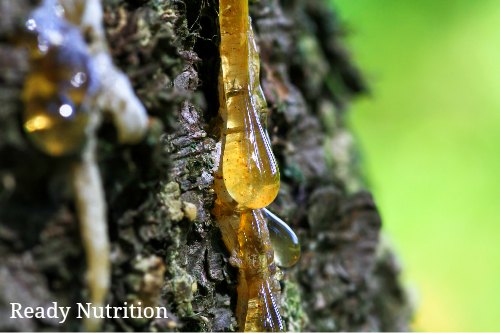
People have been using resin for a long time. It can be used to make wood stain and varnish. Yeah, I know, that’s really exciting. So, let’s cut to the chase and list what it can do.
- First Aid: The sap is antimicrobial and anti-inflammatory. A hardened piece can be softened with heat and applied to a wound to help stop bleeding. If you chew it (softer pieces), it can treat sore throats and help with a cold.
- For fire and light: the resin burns, and can be used to make torches, fire starters, and makeshift candles. Read more on how to acquire a supply of fat wood for lighting fires in a snap.
- Glue: for patching holes and tears…also in skin, akin to super-glue on a cut (double use as first-aid there). You can mount heads on blowgun-darts, spears, and arrows with it.
There’s plenty to go around. You can gather it in the woods both hardened and soft. Be sure and use a container, preferably glass and not plastic to carry your resin. People harvest it by cutting v-shaped notches into the bark in rows parallel to one another.
…click on the above link to read the rest of the article…
Want All the Green Beans You Can Eat? Get the Best Harvest With These Growing Tips
Want All the Green Beans You Can Eat? Get the Best Harvest With These Growing Tips
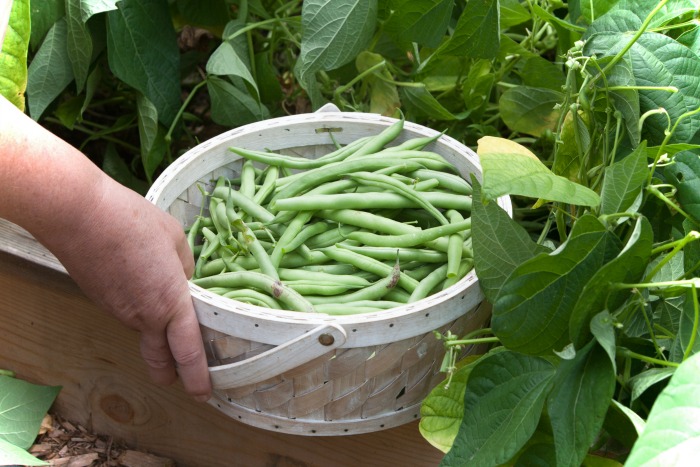
Green beans are one of the easiest and most popular summer vegetable varieties to grow in your garden. What makes the green bean so easy to grow is because once planted, they require little attention other than a drink of water now and again. One reason that green beans are favorite choices among gardeners is that they have high germination rates of 70 percent and the seeds can remain viable for 3 years. Therefore, they are great for storing long-term garden plans. As well, bush beans, in particular, are a great cover crop for warmer climates.
We prefer growing the Blue Lake Bush variety of green beans because of their many uses. They were originally developed as a canning bean, but quickly became a fresh food favorite and are now commonly served along with salads or steamed as a healthful side dish.
One drawback to planting bush beans is they tend to take up precious space because they do not grow tall like pole beans. But, what they lack in height, they make up for in production. In addition, they require less work planting, staking, weeding, and watering. Another incentive to grow more beans in the garden is they have a symbiotic relationship with soil-dwelling bacteria.
…click on the above link to read the rest of the article…
5 Common Sports Items You Can Use to Protect Yourself in an Emergency
5 Common Sports Items You Can Use to Protect Yourself in an Emergency

That being mentioned, the article is specifically for people who don’t have $80 to “dump” into Oakley Tactical shooting gloves, or Tactical Military knee pads at $70 to $80 per pair. And more. While there are some great places to find quality tactical gear, this article can give you some ideas on how to build up a supply of reserves (or daily, whichever you prefer, with your “good” gear in reserve) for when times are tough.
You can find some good deals for used sporting equipment by simply doing a search on the internet. Ebay, Amazon are some big names that have used sporting equipment, but there are other websites that specialize in used sports gear. So, check it out in your free time. That said, let’s jump into it!
5 Types of Sports Equipment That Can Be Modified Into Protective Gear
Gloves: One of the things the Oakley’s have that attracts a lot of people are those hardened plastic “knuckles” on the outside. That’s fine. I personally feel that if you have the glove that covers the knuckle, you don’t need an “artificial” one: if you’re going to strike a blow, you’re not going to hit the individual on top of his helmet. You’re going to pick a “soft” spot such as his jaw, his temple, his throat, etc.
…click on the above link to read the rest of the article…
9 Mindful Ways to Start Breaking Up With Plastic – For Good!
9 Mindful Ways to Start Breaking Up With Plastic – For Good!

 The book “The Jungle,” by Upton Sinclair basically was the blueprint that propelled the FDA into action against big industry and how detrimental it can be to the individual. Time, however, is the factor that erodes both conscience and consciousness, in that order.
The book “The Jungle,” by Upton Sinclair basically was the blueprint that propelled the FDA into action against big industry and how detrimental it can be to the individual. Time, however, is the factor that erodes both conscience and consciousness, in that order.
Each generation faces new challenges from a system designed to follow profit-potential rather than the welfare of the people confined within it. No exceptions are to be found in the food and beverage industries: most of their products are either unhealthy or outright poisonous due to dyes, preservatives or additives. No less the containers and packaging they are in.
Recently several articles surfaced that categorized these problems. Rather than “rehash” the information, in a nutshell, I will summarize it. BPA’s (Bisphenol A’s) are chemicals used in plastic bottles, containers, and on the interior liners that are found in many food cans. This chemical has been in use for more than fifty years and is found to be linked to male infertility, low sperm counts, and prostate cancer, as well as, breast cancer in women.
How This Will Affect Your Body
BPA lodges in the body’s fat cells and disrupts endocrine function…this is your body’s hormonal system. Here are two articles you can read to reference these problems:
in the body’s fat cells and disrupts endocrine function…this is your body’s hormonal system. Here are two articles you can read to reference these problems:
…click on the above link to read the rest of the article…
10 Gardening Tips for Growing Market-Worthy Tomatoes
10 Gardening Tips for Growing Market-Worthy Tomatoes
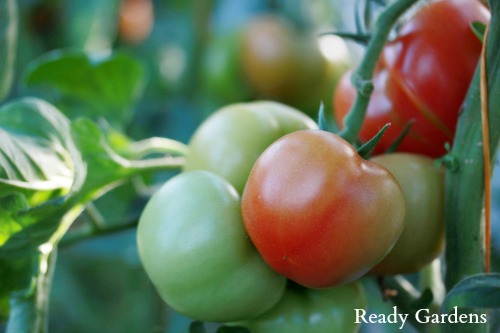
10 Gardening Tips for Growing the Juiciest Tomatoes
Some of the most popular types of tomato varieties planted are the beefsteak tomato, Celebrity, Early Girl, and the Cherry Tomatoes. The tomato plant can grow up to 6 feet tall and requires trellising or support. Tomatoes typically take about 85 days to harvest. And to get those big, delicious red orbs to grow, it requires a lot of nutrients.
Choose a fertilizer that has a balanced ratio of the three major elements, such as 10-10-10, or where the middle number (phosphorus) is larger than the first number (nitrogen), such as 2-3-1. Tomatoes are heavy feeders and usually do need fertilizer unless your soil is very rich.
Use some o these gardening tips to ensure your tomato harvest is the best one yet!
1. Choose the right varieties.
There are many types of tomato varieties to choose from. One that I always recommend is the heirloom varieties. These seeds have been around for generations and were bred for flavor, adaptability and growing performance. As well, many of these seeds are open-pollinated and the seeds can be saved for the next harvest. This ensures you have plenty of tomatoes to eat fresh, preserve or make delicious sauces with.
2. Location, location, location!
Tomatoes love bright locations where they receive 10 hours or more of sunlight. Full morning sun is always the best location, but tomatoes will do well with some afternoon sun too. As well, ensure that you have properly spaced your plants.
…click on the above link to read the rest of the article…
“Nuclear Blast to your Front! React!” – How the Army Trains to Survive an ‘Atomic Battlefield’
“Nuclear Blast to your Front! React!” – How the Army Trains to Survive an ‘Atomic Battlefield’
 The title of this article is the exact preparatory command (situation), and the command of execution given to us in the Army to drill a nuclear attack. Readers, we all hope every day that our “society does not come to a screeching halt via a nuclear attack. But what if it does? OK, we’ve “gamed” it from a perspective that you haven’t become a shadow-silhouette on a burned wall and been vaporized…that you’re not living in a “ground zero” targeted area. If you are, then you have several options beforehand: if there’s warning, bug outand get out of the blast area, or move out of the area to a place that is not a target.
The title of this article is the exact preparatory command (situation), and the command of execution given to us in the Army to drill a nuclear attack. Readers, we all hope every day that our “society does not come to a screeching halt via a nuclear attack. But what if it does? OK, we’ve “gamed” it from a perspective that you haven’t become a shadow-silhouette on a burned wall and been vaporized…that you’re not living in a “ground zero” targeted area. If you are, then you have several options beforehand: if there’s warning, bug outand get out of the blast area, or move out of the area to a place that is not a target.
Their will be skeptics, and their ilk that will ask a litany of questions like: “How are you gonna save everyone?”, “What about those who can’t afford property…?”, “Yeah, like we’re going to get warning!”
AD INFINITVM, AD NAVSEVM.
Survival is not a guarantee.
Are you’re willing to examine your lifestyle and do what it takes? Make the necessary changes and act? That is called “adaptation,” and it is what has enabled the species to survive…the minority who emerge from the rubble when the skeptical majority are dead. We’re talking “hardball,” here, and it is “sink or swim,” although we don’t shoot for that…we want others to make it through…but there comes a time when you must cut your losses and take care of you and yours.
If you’re willing to do what it takes (sometimes in the face of skepticism and even ridicule) and go “against the grain,” you may give yourself the edge helping you survive.
Enough said there. What if the worst does happen, and you happen to be five to ten miles away from a blast? Skeptics, we do have information that will work besides the results of Hiroshima and Nagasaki: the “Atomic Soldiers” of the United States armed forces. Yes, during the 1950’s, whole battalions were emplaced in the southwestern deserts of the U.S. and subjected to be the “test” subjects of nuclear explosions. Those tests were real, and the results they generated were real. We don’t want it to have been for nothing: take the knowledge they earned, and use it.
…click on the above link to read the rest of the article…
3 Places Preppers Would Never Think to Scrounge For Survival Supplies
3 Places Preppers Would Never Think to Scrounge For Survival Supplies

We Live in an Imperfect World That is Not Prepper-Friendly
The reason is the “perfect” world we live in does not present you with many opportunities to train. For that matter, there isn’t a lot of encouragement either. Certainly, no one will encourage you: not your family members, your neighbors, or community in general, let alone the government…local, state, or federal. That’s not “life.”
No, most of these guys just mentioned are only concerned with you playing to the system by getting up in the morning, going off to your work (to earn taxable income) so that you can pay your taxes, consuming foods, materials, and other necessities (with taxes), driving (using fuel that’s taxed) home…the one with your mortgage and property taxes, that have, well…a nice, “established” way for you to keep your lawn, grounds…you know…how to live, right? In an acceptable manner, right? A small cog in a giant machine, working and consuming until it’s time to call your number in. Then your money and property… what you have left, that you paid taxes on all the way? Time to tax it again until the government (kicking and screaming) magnanimously gives what’s left to your heirs.
The Only One Who Will Help You Succeed and Excel is You
As a general reminder, you never know when the next emergency will happen, so make sure you have the basic necessities to get through the most unpredictable situation.
…click on the above link to read the rest of the article…
11 Emergency Food Items That Can Last a Lifetime
11 Emergency Food Items That Can Last a Lifetime
Did you know that with proper storage techniques, you can have a lifetime supply of certain foods? Certain foods can stand the test of time, and continue being a lifeline to the families that stored it. Knowing which foods last indefinitely and how to store them are you keys to success.
The best way to store food for the long term is by using a multi-barrier system. This system protects the food from natural elements such as moisture and sunlight, as well as from insect infestations.
Typically, those who store bulk foods look for inexpensive items that have multi-purposes and will last long term. Listed below are 11 food items that are not only multi-purpose preps, but they can last a lifetime!
1. Honey
Honey never really goes bad. In a tomb in Egypt 3,000 years ago, honey was found and was still edible. If there are temperature fluctuations and sunlight, then the consistency and color can change. Many honey harvesters say that when honey crystallizes, then it can be re-heated and used just like fresh honey. Because of honey’s low water content, microorganisms do not like the environment.
Uses: curing, baking, medicinal, wine (mead)
2. Salt
Although salt is prone to absorbing moisture, it’s shelf life is indefinite. This indispensable mineral will be a valuable commodity in a long term disaster and will be a essential bartering item.
Uses: curing, preservative, cooking, cleaning, medicinal, tanning hides
3. Sugar
Life would be so boring without sugar. Much like salt, sugar is also prone to absorbing moisture, but this problem can be eradicated by adding some rice granules into the storage container.
Uses: sweetener for beverages, breads, cakes, preservative, curing, gardening, insecticide (equal parts of sugar and baking powder will kill cockroaches).
4. Wheat
Wheat is a major part of the diet for over 1/3 of the world. This popular staple supplies 20% of daily calories to a majority of the world population. Besides being a high carbohydrate food, wheat contains valuable protein, minerals, and vitamins. Wheat protein, when balanced by other foods that supply certain amino acids such as lysine, is an efficient source of protein.
Uses: baking, making alcohol, livestock feed, leavening agent
…click on the above link to read the rest of the article…
10 Ways To Avoid Diseases in Wild Game When Survival Hunting
10 Ways To Avoid Diseases in Wild Game When Survival Hunting

Common Animal Diseases You May Come in Contact With
What we’re referring here to specifically are termed zoonotic infections. These are infections that are concentrated and/or endemic to wild animal species and can be transferred (hence infecting) humans and/or domestic animals.
Some examples here are Tularemia (also known as “rabbit fever”) found in rabbits and hares. It is brought on by ticks (indeed, many of these zoonotic infections are transferred to humans by arthropod vectors (disease-carrying arthropods, such as ticks or fleas), although it can persist into the winter months and infect a human before it kills the host animal.
Brucellosis is another one, and much costlier, as it spreads to livestock, causing cattle to spontaneously abort their young prior to completion of gestation. Brucellosis can also pass to human beings. Back in 1996, Cryptosporidium passed to an individual who used deer scent (a combination of deer urine and deer glands); it was passed through the bottle of scent. Other diseases are Giardia (Giardia lamblia), Trichinosis, and tapeworm infestations.
One of the methods for these transmissions with wild game is the fecal-oral method of contamination. The hunter touches the feces or urine of the slain animal and then manages to ingest it by touching it to the mouth.
…click on the above link to read the rest of the article…



